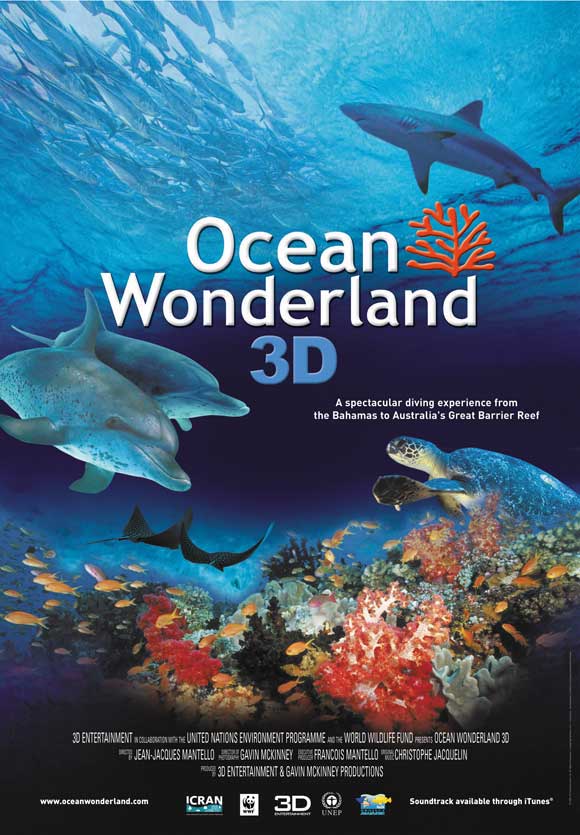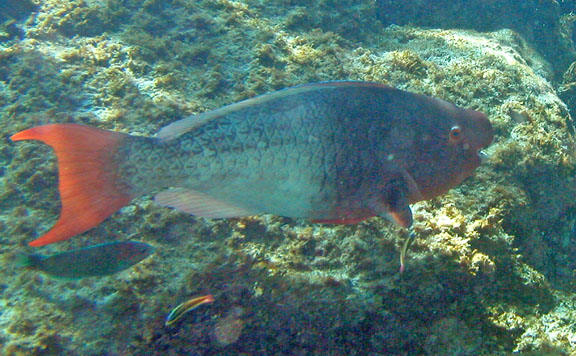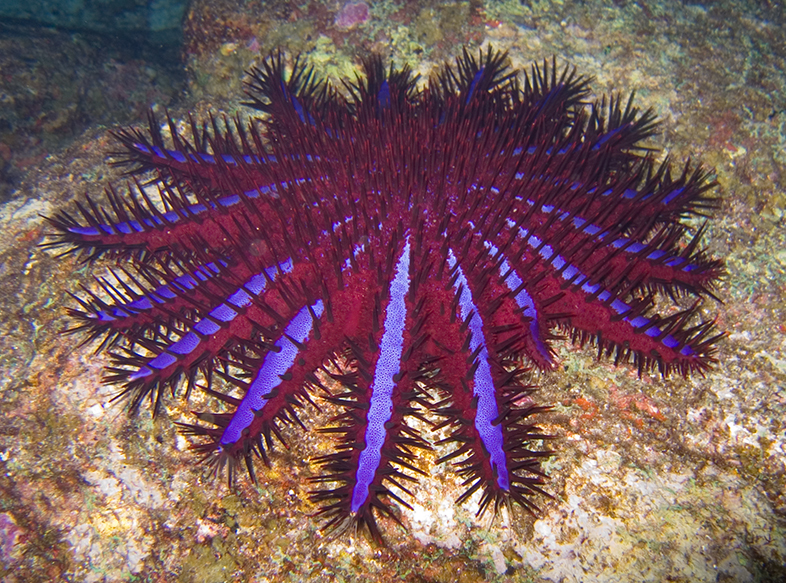Hello there! Internet access has been very difficult for me for the past few days and will continue to be difficult for the duration of my stay in Australia due to cost and time constraints. And so I plan to keep a written record of what I've been doing and write one big blog post about my travels when I get back and internet is easily accessible to me. If you know me and are interested in knowing how I'm doing before I return on June 24, by all means please shoot me an email, and I'll answer it as soon as I can. So goodbye for now, and you'll hear from me when I'm north of the equator again!
Down Under the Sea
Wednesday, May 30, 2012
Tuesday, May 8, 2012
I've been so busy this past week and a half that I totally forgot to write my last post for my Maymester lecture! Well better late than never, so here goes. Instead of having a regular classroom lecture for our last week, our class went to go see a 3D IMAX film called Ocean Wonderland in lieu of lecture. There were a couple of parts that seemed to drag on for a bit, but it was still a pretty good film overall. What I really enjoyed about the film was the fact that I was able to view the types of corals and fish I will encounter in a few weeks up close and in 3D. I felt as if I was already snorkeling in Australia and seeing everything in person! During the movie, I attempted to identify the coral and fish I saw on the screen but to no avail. Now that I have access to fish and coral identification textbooks, I'm thinking about reading up and quizzing myself on the long flight to Sydney. I figure that if it was hard for me to label fish and corals on a screen, it'll be even harder when I'm holding my breath and swimming about. So it might be a good idea for me to become familiar with them while I'm above water first. Also, what else am I going to do on a 20+ hour flight anyway?
The excitation is finally starting to kick in now that I've seriously begun to collect items to bring with me, pack my bag, and make plans to travel after my Maymester ends. While I'm sad that I will be spending time away from friends and loved ones, I can't help but smile when I think about going to Australia. I'm getting the chance to live on an island and snorkel at the Great Barrier Reef, something that most people would only dream of! Considering that I am graduating this semester, I think this Maymester class is going to be the perfect way to conclude my studies as an undergraduate. Two weeks and counting!
 |
| Ocean Wonderland 3D |
Sunday, April 29, 2012
My dad is completely obsessed with seafood. For most of my life, I had to eat fish for almost every dinner because that was all my dad would ever eat. Even when we went out to eat for lunch or dinner, he would always suggest going to a seafood restaurant like Red Lobster or Pappadeaux. When I asked him why he loved seafood so much, he said he's simply used to eating seafood since it was all he ate while he was growing up in the Philippines. He
told me that he lived in Kalibo, the coastal capital of the province of
Aklan, and that the seafood there was better and more varied than any seafood you could get anywhere
else. At the time, I thought he might have just been exaggerating.
However, after discovering in lecture that the Philippines is surrounded by an
aquatic region called the Coral Triangle, I am beginning to think that maybe there was some truth in what he said.
 |
| Coral Triangle Reef |
Home to hundreds
of species of coral and thousands of different types of fish, the Coral
Triangle contains some of the most diverse ecosystems in the world. Countries
such as the Philippines highly depend on the Coral Triangle for resources such
as food, which explains why my dad claims that all he ate was fish while living
in the Philippines. The problem is that factors such as growing populations and
increased trade are leading to overfishing, which is putting stress on fragile
coral ecosystems.When it comes to
coral reefs, energy flow from producers (corals, algae) to consumers (fish,
starfish, etc.) is highly conserved. Overfishing throws the energy balance off,
causing the rapid growth of some organisms and the death of others. For
instance, the removal of damselfish that feed on specific types of algae can cause a reef to become overrun with algae and kill off corals due to heavy algal competition.
To prevent these kinds of disasters, a good part of the Great Barrier Reef is now considered a marine park and is protected by strict regulations on the removal of any wildlife. And although there are some marine parks within the Coral Triangle, I think that many more are needed. Some may argue that protecting more areas would create a strain on human populations that live and depend on seafood, but one must also take into account that continued overfishing may result in the complete loss of the marine ecosystems that provide the food. In addition, tourism in countries such as the Philippines and Indonesia will also be negatively affected by dwindling biodiversity since many people travel to these countries just to experience the wonder that is the Coral Triangle. So all in all, to continue reaping the benefits these coral reefs can bring, it is important to focus on their conservation.
Monday, April 16, 2012
I know quite a
bit about the effects of global warming on land ecosystems, but I'm not too
familiar with their effects on ecosystems below sea level. I know that global
warming causes ocean temperatures to rise, making it hard for fish to breathe due to decreased oxygen in the water. I also know that melting ice and snow is causing rising water levels and the submersion of coastal land. But something I didn’t
realize is that coral reefs are also greatly
affected by global warming.
One significant way global warming
affects corals is through coral bleaching. As I had mentioned in an earlier post, coral bleaching occurs when certain stressors cause coral to release zooxanthellae in its tissue. There are many different factors that can lead to coral bleaching, but the most prominent cause is rising ocean temperature. It is possible for corals to bleach when ocean temperatures drop to abnormally cold levels, but corals react more strongly to increases in temperature. Bleaching naturally occurs due to seasonal climate changes, but an overall increase in water temperature could be dangerous for corals.
In addition to the problem of water temperature, rising water levels also make it difficult for zooxanthellae still within coral to perform photosynthesis. Light strength becomes weaker the deeper you go down in water, and so not enough light is able to reach zooxanthellae when water levels are too high. Corals normally grow upward so that they can receive the light they need, but they are in no way equipped to grow fast enough to accommodate themselves to the quickly rising water. This combined with the stress of warmer waters greatly increases the chance that coral bleaching will occur and also makes it harder for coral to recover from incidences of bleaching. And these factors, in turn, could kill off corals and endanger the marine populations that depend on them.
 |
| Bleached Coral |
Personally, I think the sight of bleached coral looks beautiful. The contrast of the stark white coral skeletons against bright fish and water creates a neat, slightly eerie effect. But even though I do think it would be cool to see, I sincerely hope that I never encounter bleached coral. Bleached coral may look cool, but I'm sure that it can't compare to experiencing a colorful, vibrant coral reef and its interaction with the marine life it supports. Coral reefs are what allow so many wonderful and different species to exist, and it would be a great shame to have this diversity die with the coral.
Sunday, April 15, 2012
Rather than learn more about corals
this week, we went over all the fish that we might run across while
snorkeling at Lizard Island. Angelfish, damselfish, wrasses, oh my! We went
over so many fish that I’m doubting I’ll ever be able to remember them all well
enough to tell them apart in the water. What's even worse is that the coloration for some fishes such as parrotfishes depends on its gender and life cycle stage. Male parrotfish look different from female parrotfish, and both of these look different than the juvenile form of a parrotfish.
 |
| Bicolor Initial Phase (Female) Parrotfish |
 |
| Bicolor Terminal Phase (Male) Parrotfish |
 |
| Bicolor Juvenile Phase Parrotfish |
It’s really amazing how diverse the marine life is at the Great Barrier Reef. In addition to many different corals and fish, there are also molluscs, crustaceans, sea turtles, sponges, sea squirts, starfish, and sea urchins. We've been promised to see our fair share of all of these at Lizard Island. We might even have a chance to see bigger animals like the occasional whale or shark when the class takes a calm day to snorkel over at the drop-off, which is a steep underwater wall where the reef ends and open ocean begins. I'm planning on taking as many pictures as possible with my underwater camera and making a scrapbook of all the different forms of wildlife I get the chance to see. This may fall through since I tend to forget to take pictures when I'm caught up in a moment, but we'll see how it goes. At any rate, I'll be so happy just to see it all!
Saturday, April 7, 2012
What's the first thing that comes to mind when someone says starfish? More than likely, most people envision starfish as something resembling Patrick Star from SpongeBob SquarePants: a nice, pink underwater creature with five arms. At least that's what I used to think. Now, after last week's lecture, my skin crawls when I hear the word starfish because all I can think of is this:
Crown-of-thorns starfish are the second biggest species of starfish in the world. They are characterized by their multiple arms which are covered in spikes containing a dangerous toxin. Accidentally pricking yourself against this bad boy will cause some pretty bad stinging and swelling. They are very hard to kill since they regenerate, which means hacking it to bits just causes it to multiply. But the worst part of it all is that these starfish float around until they land on coral and then proceed to munch on poor little coral polyps, leaving a bare skeleton behind.
 |
| Crown-of-thorns starfish |
Normally, the fact that crown-of-thorns starfish prey on coral wouldn't be such a bad thing. Every animal has its prey, and every animal has its predators. That's how life is. However, the natural balance of life can be thrown off when non-native species invade with few predators to keep it in check. This has been the case with these starfish for the past several years. When they spawn, many juvenile crown-of-thorns can be carried to distant reefs by the sea. They then continue to grow into adults, causing an outbreak of starfish and massive destruction to local coral reefs. Researchers are attempting to determine exactly why these outbreaks occur but have not yet come to a definitive conclusion.
Apparently, the part of the Great Barrier Reef that we will be observing later in the year is currently on the verge of a crown-of-thorns outbreak. Terrifying though they may be, I still think that it will be very interesting to be able to observe these starfish in person. I am also very curious to see if and how the research station we will be staying at disposes of these nasty buggers.
Apparently, the part of the Great Barrier Reef that we will be observing later in the year is currently on the verge of a crown-of-thorns outbreak. Terrifying though they may be, I still think that it will be very interesting to be able to observe these starfish in person. I am also very curious to see if and how the research station we will be staying at disposes of these nasty buggers.
Saturday, March 31, 2012
Symbiosis
is such a beautiful thing. Unclouded by human characteristics such as
selfishness or jealousy, cooperation in nature is simply tit for tat and
nothing else. Before this semester, I had learned about a few symbiotic
relationships in some of my Biology classes, but I didn’t know corals are one of the many organisms that rely on symbiosis for survival.
Building
up calcium carbonate is a lot of work, and so corals work with algae called
zooxanthellae (pronounced zoh-uh-zan-THEH-lee) which create useable sources of
energy through photosynthesis. The corals in return provide carbon dioxide needed
for photosynthetic processes. Zooxanthellae live within coral polyps, and so
corals also provide them with shelter and protection. For these reasons, corals
and zooxanthellae have a very harmonious relationship with each other.
An
interesting fact I discovered is that zooxanthellae create a coral’s color. Photopigments used in photosynthesis can be seen within the coral, giving the coral its hue. Since different zooxanthellae produce certain photopigments, the color of a coral depends on which type of zooxanthellae is contained within the coral. I also learned that the term "coral bleaching" refers to when a coral loses its zooxanthellae due to stressors such as high water acidity or disease. I had heard of coral bleaching before, but all I knew is that it had to do with corals losing their color. Now that I know about the presence of zooxanthellae, I finally understand how and why coral bleaching occurs.
Subscribe to:
Comments (Atom)

